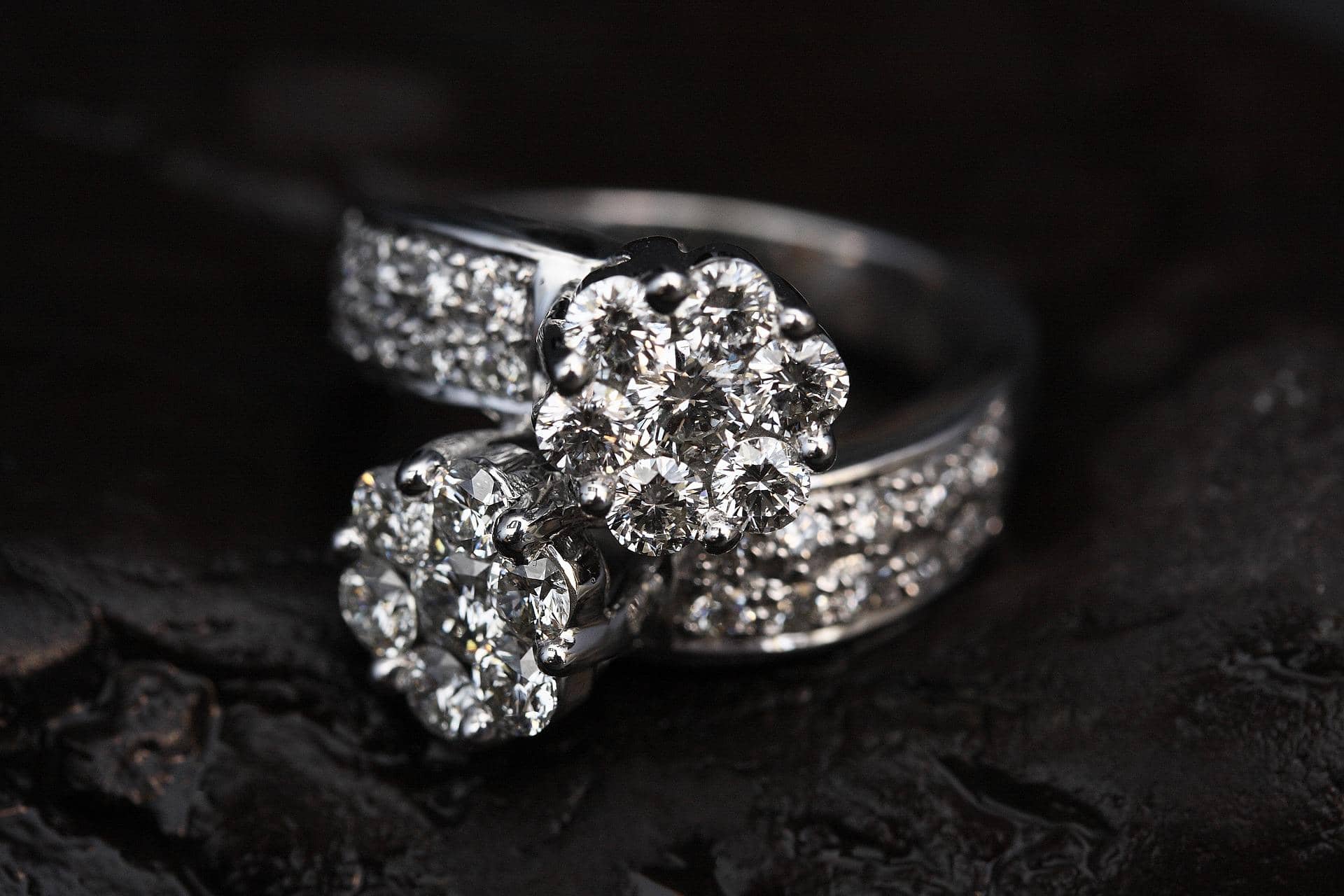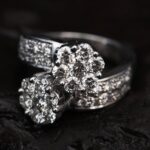Choosing Your Diamond Ring Setting

From engagement rings and wedding bands to diamond eternity rings that make extra special gifts, choosing the perfect diamond ring is an exciting process. With an abundance of stunning diamond rings to choose from, including different metals, styles and, of course, ring settings - your options are endless. To help you pick a beautiful gift for a loved one or to discover the ultimate proposal piece, we’re discussing the different ring settings and how to choose the perfect fit.
What Is A Diamond Ring Setting?
A ring setting refers to how gemstones are set or mounted onto a ring band. The ring setting is meant to highlight the beauty of the diamond and the style of the setting itself will impact the overall aesthetic of the ring. Your diamond ring setting is extremely important and is one of the first decisions you should make when choosing a ring. There are plenty of diamond ring settings to choose from and to help you navigate the wide selection, we’re here to help…
How To Choose A Diamond Ring Setting
Your diamond ring setting is the foundation of the entire ring design and selection will depend on personal style and preference, along with your lifestyle. Some settings lend themselves better to those who work with their hands all day, while other, more intricate designs, with high-set stones, are better suited to those who don’t. You will want to consider how often the ring will realistically be cleaned and maintained, too, as some ring settings will require more upkeep.
Regardless of which ring setting you choose, they will require a regular 6-month inspection to ensure that the prongs have not loosened up. If the gemstone has become loose, it’s important to get a professional jeweller to tighten the prongs and secure the gemstone in place.
What Is The Most Popular Diamond Ring Setting?
The most popular and common ring setting is called the prong, which holds the gemstone in place with a minimal amount of metal - typically four or six prongs. This diamond ring setting allows more light to pass through the diamond, resulting in added brilliance.
The type of prong used will depend on the size and shape of the gemstone. For example, a V-shaped prong would be best suited for a heart or emerald-shaped diamond as it will hold it in place more securely. If you have a more active lifestyle, a ring setting without prongs is recommended to make sure the prongs don't become loose.
The Different Types Of Diamond Ring Settings
When planning a picture-perfect proposal or looking for a diamond ring to match your everyday lifestyle, you’ll need to know the differences between popular diamond ring settings to ensure you’re making the right choice. From claw and corner, to pave and invisible, you will be able to find a ring setting that can stand the test of time.
What Is A Claw Setting?
The claw setting is one of the more traditional and frequently used settings. Also known as the prong setting, they vary in shape, number and orientation of the claws.
What Is A Rub Over Setting?
Generally considered to be a more modern setting, the rub over setting produces a neat, clean appearance. All edges of the gemstone are secured by metal that is pushed up and smoothed over the stone, producing a very safe setting as there are no claws to snag and potentially pull up.
What Is A Corner Setting?
Are you looking for an intriguing alternative to the more traditional type of ring setting? A corner setting is a hybrid between a claw and a rub over (with the stone completely secured from the sides). However, corner settings have advantages over traditional claw settings in that there is less risk of the claws moving and this type of setting requires less upkeep too.
What Is A Pave Setting?
Traditionally used within Victorian jewellery, yet making a comeback in recent years, a pave ring setting is a group of smaller diamonds which produce a large amount of sparkle. The clusters of tiny gemstones that make up a block of pave set stones are held in place by tiny beads of metal that clamp the stones down in what looks like a continuous block of gemstones.
What Is An Illusion Setting?
Illusion settings, also known as star settings, were used in Victorian times but reworked into a modern style, so this ring setting can be used in an antique style or for a more contemporary look depending upon your design. Illusion ring settings can also give the perception of a much larger gemstone.
What Is A Channel Setting?
Channel settings are often used within 'full', 'V' or 'half' eternity ring designs. In the same way that pave set stones produce a block of sparkle, channel set stones do the same thing but in a more exact and geometrical-looking way.
What Is An Invisible Setting?
If you are looking to set a small accent stone, an invisible ring setting is the perfect option. Tiny sections of metal are pushed up by the stone setter, around the gemstone, to produce an effect of the stone appearing to sit just in the metal.
What Is An Open Tip Setting?
Another popular ring setting option is an open tip setting, another version of the rub over setting. A lip of metal holds your gemstone in place all the way around the stone but, unlike the rub over setting, the tip at the bottom of the stone is visible from the side.
How To Take Care Of Diamond Ring Settings
Are you unsure how to clean your diamond rings? Different ring settings may require different levels of upkeep. Take prong settings for example, they will need to be maintained every 6 months to ensure prongs don't become loose, plus keeping them clean can ensure they stand the test of time. Make sure you don't wear them when washing your hands, showering, swimming or working outdoors as submerging rings can cause them to dull as small bits of grit and dust can be abrasive and permanently damage your ring.
If you do need to give your diamond ring a clean, follow these steps:
- Get a small bowl of warm water and mix with any mild liquid detergent.
- Brush your jewellery gently with a small soft brush and be careful not to scratch the metal or diamond.
- Rinse thoroughly under water and pat dry with a soft lint-free cloth.
- Use a quick-dip liquid jewellery cleaner to keep your diamond jewellery shiny.
To discover more advice on choosing and looking after your gold jewellery, check out the Hatton Jewellers blog.


